26 Flavorful Spanish Side Dishes to Brighten Your Meal
Spanish side dishes burst with vibrant flavors that transform ordinary meals into extraordinary culinary experiences.
Mediterranean ingredients dance across plates, creating sensory symphonies of color and taste.
Regional traditions infuse each preparation with deep cultural significance and passionate cooking techniques.
Culinary artisans craft these accompaniments using fresh, seasonal produce that reflects Spain's diverse landscapes.
Robust spices and simple yet powerful ingredients characterize these delectable additions to main courses.
Rich textures and balanced flavors distinguish Spanish side dishes from standard meal complements.
Complex yet approachable, these culinary creations invite you to experience authentic Spanish gastronomy.
Here are 26 great Spanish side dishes that will elevate your dining adventure:
Great Spanish Side Dishes That Steal the Show
Spanish tables overflow with colorful side dishes. Tapas, salads, and roasted vegetables brighten every meal with Mediterranean flair.
Chistorra
Chistorra blends premium pork with bold Spanish spices, creating a crimson sausage celebrated across northern Spain's Basque and Navarre regions.
Intense paprika infuses the meat with a distinctive red hue and robust flavor profile.
Butchers traditionally craft this quick-cured delicacy using minced pork belly or jowl, sometimes mixing in beef for added complexity.
Garlic and salt enhance the sausage's rich taste, making it a versatile ingredient for multiple cooking methods.
Grilling, frying, or baking transforms chistorra into a popular tapas centerpiece.
Spanish households frequently serve this slender sausage as a savory appetizer or side dish.
Regional culinary traditions highlight its flexibility in complementing various meals.
Small portions pack maximum flavor, embodying Spain's passionate approach to meat preparation.
Papas Arrugadas
Papas arrugadas exemplify Canary Islands' culinary simplicity with small potatoes boiled in extremely salty water until their skin wrinkles and becomes encrusted with salt crystals.
Native islanders traditionally used seawater for cooking these small, unpeeled potatoes in a unique preparation method.
Local kitchens typically serve the potatoes with mojo rojo or mojo verde, spicy pepper-based sauces that complement their intense saltiness.
Farmers originally grew specific potato varieties ideal for this technique in volcanic soil of Lanzarote and Tenerife.
Spanish conquistadors first introduced potatoes to these islands during the 16th century, transforming regional cuisine.
Canary Islanders perfected this cooking method over generations, creating a distinctive potato dish recognized worldwide.
Maritime cultures influenced the technique, using abundant salt and minimal ingredients.
Salt preservation techniques likely inspired this minimalist potato preparation that remains a cornerstone of Canarian gastronomy.
Arroz Amarillo
Arroz amarillo bursts with golden warmth from saffron and turmeric, transforming ordinary rice into a sunshine-colored side dish with deep Latin American roots.
Spanish culinary traditions originally crafted this vibrant recipe, which quickly spread across different countries and cuisines.
Immigrant communities adapted the original recipe by replacing scarce saffron with accessible achiote, maintaining the signature yellow color.
Chicken stock and aromatic spices infuse the rice with rich, complex flavors that complement main course proteins.
Turmeric provides both distinctive color and subtle earthy undertones to the grain mixture.
Restaurants and families serve arroz amarillo as a versatile accompaniment that elevates any meal.
Setas Al Ajillo
Champiñones al ajillo are garlicky Spanish mushroom tapas bursting with Mediterranean flavors and traditionally served sizzling in a clay dish.
Spanish kitchens prepare this simple yet intense dish by sautéing mushrooms in rich olive oil with abundant minced garlic.
White wine adds depth and complexity to the cooking process, creating a luxurious sauce that defines the dish's character.
Chopped parsley provides a fresh, green accent that brightens the entire preparation.
Crusty bread becomes an essential companion, perfect for soaking up every last drop of the aromatic liquid.
Small plates of these savory mushrooms frequently appear in Spanish bars and restaurants as a popular appetizer.
Spain's passion for bold, straightforward ingredients shines through in this classic tapa that transforms humble mushrooms into a memorable culinary experience.
Escalivada
Escalivada is a rustic Catalan vegetable dish roasted over hot embers, embodying simplicity and traditional Spanish culinary wisdom.
Farmers from the Pyrenees mountains originally created this recipe during long pastoral days, grilling whole vegetables directly on open fires.
Eggplants, bell peppers, onions, and tomatoes transform into a smoky, tender delicacy through careful roasting and meticulous preparation.
Each vegetable is individually charred, then carefully peeled and deseeded to preserve its rich, concentrated flavor.
Seasoned with olive oil, salt, and sometimes garlic, escalivada serves as a versatile side dish or appetizer alongside grilled meats.
Spanish regional cooking celebrates this technique of ember-roasting, which concentrates natural vegetable sweetness and develops complex, smoky undertones.
Mediterranean cuisine deeply respects this method of preparing vegetables, highlighting fresh ingredients and minimal intervention.
Pisto
Pisto represents a rustic Spanish vegetable medley originating from La Mancha, blending roasted tomatoes, onions, bell peppers, and courgettes into a versatile culinary masterpiece.
Moorish influences brought this hearty dish to Spain, introducing complex flavors through traditional cooking techniques.
Spaniards enjoy pisto as a flexible recipe served either cold as an appetizer or warm alongside main courses.
Mediterranean cooking traditions shine through this simple yet flavorful vegetable stew.
Seasonal ingredients define each version, reflecting local agricultural abundance.
Spain's commitment to fresh produce transforms basic vegetables into a memorable dining experience.
Authentic pisto connects generations through its straightforward preparation and rich cultural heritage.
Patatas A Lo Pobre
Patatas a lo pobre are rustic Spanish potato slices simmered in olive oil with onions and peppers, embodying Andalusian comfort food's simplicity and bold flavors.
Mediterranean home cooks craft this budget-friendly side dish by slowly frying potatoes and vegetables in generous olive oil until they soften and caramelize.
Vinegar adds a tangy brightness that elevates the potatoes' richness, creating complex layers of taste.
Garlic infuses the dish with deep, aromatic warmth that complements the sweet peppers.
Red and green peppers contribute vibrant color and subtle sweetness to the mix.
Each ingredient transforms during cooking, developing rich, concentrated flavors.
Originally named for its humble ingredients, patatas a lo pobre demonstrates how simple components can create an extraordinary culinary experience.
Ensalada Rusa
Ensalada rusa is a creamy Spanish potato salad that blends boiled vegetables with mayonnaise in a classic tapas-style dish.
Spanish versions enhance the traditional recipe with protein like tuna or chicken for extra flavor.
Diced potatoes, carrots, and peas form the salad's core ingredients, creating a smooth, rich texture.
Hard-boiled eggs and pickles add complexity and crunch to the mixture.
Uniform vegetable cutting ensures balanced bites throughout the dish.
Mayonnaise binds all components together, providing a silky coating.
Salt and pepper season the salad, highlighting its fresh ingredients.
Cold serving makes ensalada rusa a refreshing choice for summer gatherings.
Patatas Panaderas Al Horno
Patatas panaderas al horno are Spanish oven-roasted potatoes traditionally cooked in bakers' bread ovens, featuring golden-crisp potato slices layered with caramelized onions and enhanced by olive oil's rich flavor.
Spanish home kitchens elevate this simple side dish through careful preparation, slowly roasting potatoes until they develop a crispy exterior and tender interior.
Olive oil generously coats potato and onion slices, creating a golden-brown surface with deep, concentrated flavors.
Salt provides essential seasoning that intensifies the dish's rustic taste.
Bakers originally developed this recipe as a practical way to use residual oven heat after baking bread.
Mediterranean culinary traditions embrace these potatoes as a versatile accompaniment to various proteins like meat, fish, and poultry.
Piperade
Piperade represents a vibrant Basque culinary staple blending tomatoes, onions, bell peppers, Espelette pepper, and garlic into a colorful regional specialty.
Red peppers dominate this traditional dish from French and Spanish Basque Country.
Originating in the early 1800s, the term initially described ground pepper before evolving into a celebrated recipe.
Basque kitchens often enhance piperade with ham and eggs for extra flavor complexity.
Espelette town hosts an annual October fair celebrating regional specialties like piperade.
Mediterranean ingredients and simple cooking techniques define its authentic preparation.
Regional pride shines through this pepper-rich dish that tells a story of Basque culinary heritage.
Cachelos
Cachelos are classic Galician potatoes boiled with bay leaves and seasoned simply with salt, paprika, and olive oil.
Kennebec potatoes serve as the preferred variety for this rustic dish.
Galicians traditionally prepare cachelos by scrubbing potatoes without peeling them.
Boiling happens in salted water with aromatic bay leaves until the potatoes reach perfect tenderness.
Regional cooking methods emphasize minimal ingredient handling and maximum flavor preservation.
Spanish culinary traditions highlight this straightforward potato preparation as a staple side dish.
Mediterranean cooking influences shine through the uncomplicated preparation technique.
Olive oil drizzled over warm potatoes completes the signature presentation.
Samfaina
Samfaina represents a classic Catalan vegetable stew bursting with Mediterranean flavors and seasonal ingredients.
Rooted in Spanish culinary traditions, this colorful dish combines eggplants, tomatoes, onions, and bell peppers slowly simmered in olive oil.
Barcelona and surrounding regions celebrate the recipe as a versatile accompaniment to meats, fish, and eggs.
Skilled home cooks often personalize the blend based on garden-fresh produce available.
Summer vegetables create its signature rich, silky texture and intense flavor profile.
Mediterranean cooking methods transform simple ingredients into a robust side dish.
Spanish kitchens consider samfaina a fundamental component of regional cuisine.
Zarangollo
Zarangollo is a signature Spanish vegetable scramble originating from Murcia, masterfully blending soft scrambled eggs with thinly sliced zucchinis and onions.
Mediterranean kitchens frequently enhance this simple dish by adding potatoes for extra texture and flavor.
Restaurants and home cooks across the region serve zarangollo as a warm tapa alongside crisp white wine.
Street vendors and local bars often feature this quick, nutritious meal throughout Murcia's bustling food scene.
Regional ingredients make zarangollo a true reflection of southeastern Spanish culinary traditions.
Farmers' fresh zucchinis and eggs form the core of this rustic preparation.
Summer vegetables ensure maximum flavor and nutritional value.
Quick cooking techniques guarantee a satisfying meal in minutes.
Tombet
Tombet is a rustic vegetable medley from Mallorca that celebrates the island's fresh produce through carefully layered and richly seasoned baked vegetables.
Mediterranean farmers originally crafted this dish to transform simple garden ingredients into a satisfying vegetarian meal.
Aubergines, red bell peppers, and potatoes form the primary vegetable base, each carefully fried in olive oil before baking.
Cooks arrange these colorful vegetables in alternating layers to create visual and flavor complexity.
Generous amounts of fried tomatoes, garlic, and parsley generously coat the top, adding intense aromatics and depth.
Spanish culinary traditions deeply influence this dish's preparation, ensuring maximum flavor extraction.
Regional olive oil plays a crucial role in developing the vegetables' rich, caramelized textures.
Traditional Mallorcan families typically serve tombet as a summer side dish or light main course.
Arros A Banda
Arros a banda blends traditional Spanish coastal cuisine with ingenious fishermen's resourcefulness, transforming modest ingredients into a flavorful seafood rice specialty from Alicante's Mediterranean region.
Valencian fishermen originally crafted this dish by repurposing unsold market fish and creating a rich broth infused with potatoes and onions.
Rice cooked in this concentrated seafood stock absorbs intense maritime flavors, making it a standout side accompaniment.
Fishermen would separate the rice ("a banda") from the primary fish protein, allowing each component to shine independently.
Mediterranean ingredients like saffron, garlic, and olive oil enhance the dish's depth and complexity.
Local restaurants and home kitchens continue this maritime culinary tradition, celebrating Valencia's coastal heritage.
Authentic preparation requires careful stock reduction and precise rice cooking techniques passed through generations.
Menestra De Verduras
Menestra de verduras stands as a quintessential Spanish vegetable medley bursting with regional ingredients and flexible serving styles.
Spanish kitchens transform seasonal vegetables like asparagus, peas, artichokes, green beans, and potatoes into a versatile culinary creation.
Mediterranean regions celebrate this dish as a hearty soup, side dish, or complete stew depending on preparation techniques.
Fresh vegetables define its core character, with each ingredient carefully selected for maximum flavor and nutritional value.
Olive oil typically provides a rich base for sautéing and enhancing vegetable textures.
Protein additions like eggs or ham can elevate the dish from simple vegetable medley to a more substantial meal.
Potatoes With Milk And Eggs (Patatas Con Leche Y Huevos)
Patatas con leche y huevos exemplifies Spanish comfort cuisine through its rich potato-based recipe blending rustic ingredients.
Sunflower oil helps crisp sliced potatoes until golden brown and slightly crunchy.
Spanish home kitchens traditionally prepare this simple yet satisfying meal using fresh potatoes, eggs, and creamy milk.
Gruyere cheese adds a subtle nutty flavor that enhances the dish's overall taste profile.
Rural Spanish families often serve this warming meal as a quick breakfast or hearty lunch option.
Seasonings like salt provide basic but essential flavor enhancement to the potatoes.
Eggs are gently incorporated to create a soft, protein-rich texture throughout the dish.
Peas And Carrots (Guisantes Y Zanahorias)
Guisantes y zanahorias are a classic Spanish vegetable medley bursting with simple Mediterranean flavors and nutritional richness.
Spanish kitchens celebrate this colorful side dish combining sweet peas and tender carrots as a staple accompaniment to main courses.
Crispy bacon bits provide a savory depth that elevates the entire dish's taste profile.
Butter adds a smooth, rich undertone that complements the vegetables' natural sweetness.
Salt seasons the mixture, balancing the ingredients' individual characteristics.
Regional Spanish families often serve this versatile side dish alongside grilled meats or as part of a larger meal.
Zorongollo
Zorongollo electrifies Spanish summer cuisine with its bold roasted red pepper medley from Extremadura's western landscapes.
Crisp red peppers transform into a silky salad base through careful roasting, blending seamlessly with ripe tomatoes and sharp garlic.
Olive oil cascades through the ingredients, creating a smooth, intensely flavored profile that speaks to traditional Spanish cooking techniques.
Salt and pepper provide essential seasoning that highlights each vegetable's natural essence.
Mediterranean ingredients dance together, delivering a cool, refreshing experience perfect for hot afternoons.
Spanish home kitchens celebrate this uncomplicated yet magnificent salad as a testament to regional culinary wisdom.
Extremaduran families have passed down this recipe through generations, maintaining its authentic character.
Fried Sorrel (Acederas Rehogadas)
Acederas rehogadas is a rustic Spanish side dish starring sorrel leaves sautéed with garlic and white wine vinegar.
Mediterranean farmers traditionally prepared this simple green vegetable recipe using fresh sorrel harvested from local gardens.
Spanish home cooks quickly fry chopped sorrel leaves in olive oil until slightly wilted and tender.
Garlic provides a sharp, aromatic base that complements the herb's tangy, lemony flavor.
Olive oil adds richness and helps soften the leaves during cooking.
White wine vinegar introduces a subtle acidic brightness to balance the greens' natural tartness.
Salt enhances the overall taste profile, creating a balanced and flavorful side dish.
Patatas Chulas
Patatas chulas are Spanish potato slices expertly transformed into a crispy, golden side dish bursting with Mediterranean flavors.
Regional Spanish cooks slice potatoes thinly and fry them slowly in olive oil with garlic and herbs.
Vinegar adds a tangy dimension to the potatoes during the final moments of high-heat cooking.
Garlic and parsley provide aromatic depth to the simple yet delicious preparation.
The technique ensures a crisp exterior while maintaining a soft potato interior.
Each bite delivers a perfect balance of textures and robust Spanish seasoning.
Olive oil plays a crucial role in creating the dish's signature golden-brown color.
These potatoes complement grilled meats and serve as a popular tapas-style accompaniment.
Pinto Beans And Rice (Judias Pintas Con Arroz)
Judias pintas con arroz embodies Spanish comfort cuisine with its hearty blend of pinto beans and rice.
Spanish home kitchens celebrate this protein-rich meal as a staple weeknight dinner.
Mediterranean ingredients like olive oil, paprika, and bay leaves infuse deep flavor into the dish.
Cooks typically soak pinto beans overnight before slowly simmering them with aromatic onions and garlic.
Brown rice complements the creamy beans, creating a satisfying one-pot meal.
Butter adds richness while flour helps thicken the bean sauce.
Salt and additional spices enhance the overall taste profile.
Families across Spain enjoy this nutritious and economical traditional recipe that delivers maximum satisfaction with minimal ingredients.
Bollit
Bollit stands as a rustic Valencian vegetable stew brimming with regional culinary simplicity and versatile ingredients.
Mediterranean farmers traditionally crafted this hearty dish using locally grown vegetables like potatoes, onions, and carrots.
Green beans form a core component of its classic preparation, while oil and vinegar provide essential seasoning and depth.
Valencian kitchens embrace this unpretentious recipe as a testament to resourceful cooking techniques.
Nutrition and comfort merge seamlessly in this unpretentious vegetable medley.
Rural Spanish communities continue to cherish this straightforward stew as a connection to agricultural traditions.
Guiso De Coliflor
Guiso de coliflor embodies Spanish culinary simplicity with its robust Mediterranean flavors blending sweet and savory ingredients.
Spanish home kitchens transform cauliflower into a delightful one-pot meal featuring tender florets simmered with aromatic chorizo sausage.
Mediterranean pine nuts and raisins provide unexpected textural contrasts and subtle sweetness to the vegetable base.
Spicy paprika adds warmth and depth to the vegetable medley, while fresh parsley contributes bright herbal notes.
Olive oil helps marry the complex flavor profile, creating a harmonious dish.
Spanish families often serve this comforting meal as a hearty side or light main course.
Swiss Chard And Tomatoes (Acelgas Con Tomate)
Acelgas con tomate exemplifies Spanish vegetable cuisine through its simple yet flavorful preparation of Swiss chard simmered with ripe tomatoes.
Spanish home kitchens transform this green leafy vegetable into a comforting side dish bursting with Mediterranean flavors.
Chefs typically boil Swiss chard until tender and drain excess water before sautéing with chopped onions.
Ripe tomatoes create a rich sauce that coats the greens with natural sweetness.
Olive oil adds depth to the dish while enhancing its authentic Spanish character.
Sugar balances the tomatoes' acidity, creating a harmonious blend of tastes.
Herbs like thyme and parsley contribute fresh, aromatic notes to the vegetable medley.
Salt seasons the dish, completing its rustic and wholesome profile.
Pipirrana Rin-Ran
Rin-ran embodies Spain's resourceful culinary spirit, transforming simple ingredients into a satisfying Mediterranean dish packed with robust flavors.
Spanish fishermen traditionally crafted this salad using salted cod strips and kitchen leftovers like potatoes and eggs.
Cumin and olive oil add depth to its rustic profile, while red peppers contribute a subtle heat and vibrant color.
Garlic provides an aromatic punch that elevates the entire composition.
Salt cod remains the primary protein, complemented by diced potatoes and hard-boiled eggs.
Each ingredient reflects the region's agricultural and maritime heritage.
What Are the Best Cold Spanish Sides for Summer Meals?
Spanish cuisine offers a variety of refreshing cold side dishes perfect for hot summer days. These sides complement light main courses and showcase vibrant, fresh flavors:

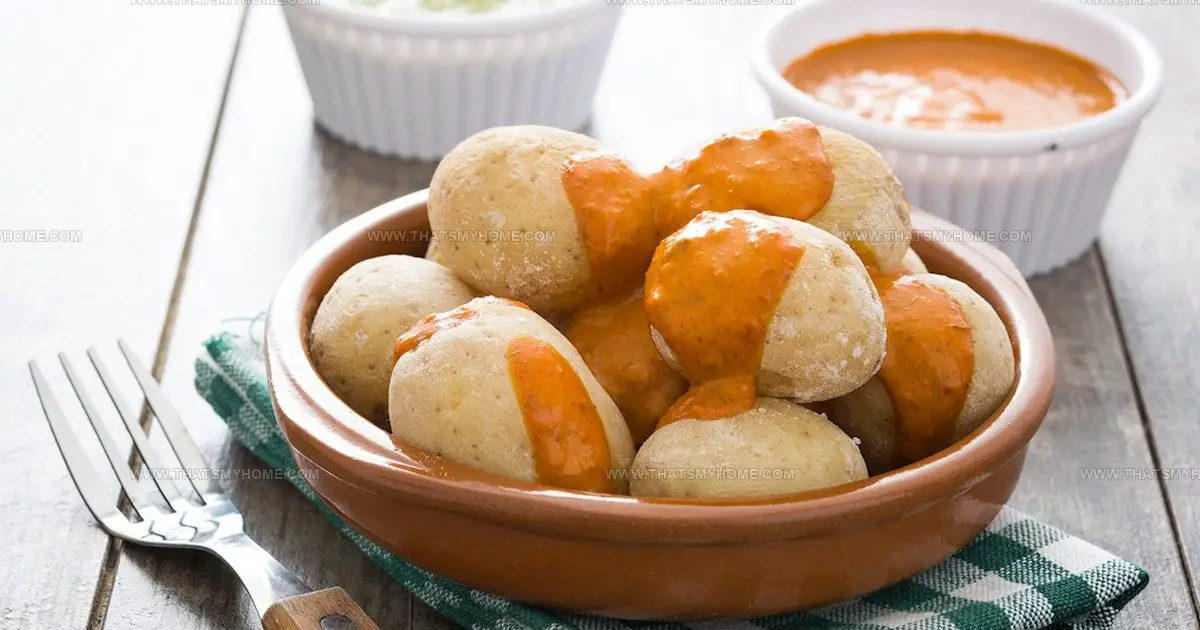

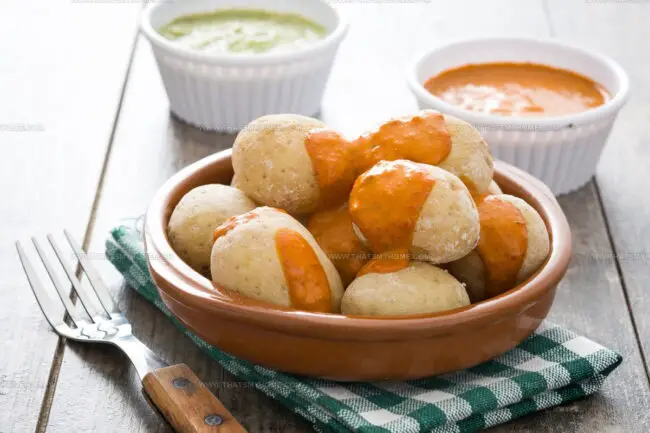
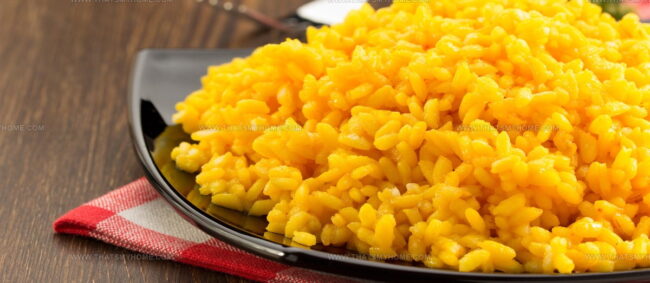
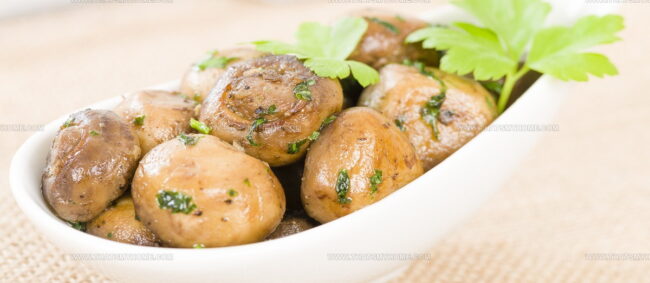
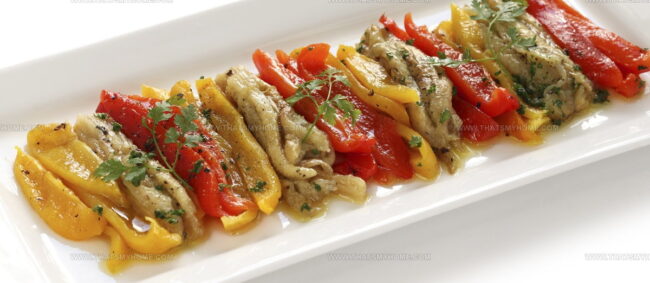
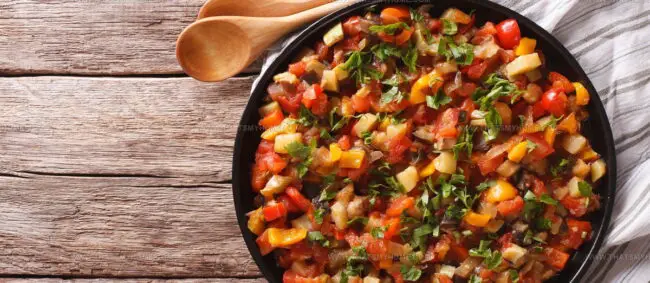
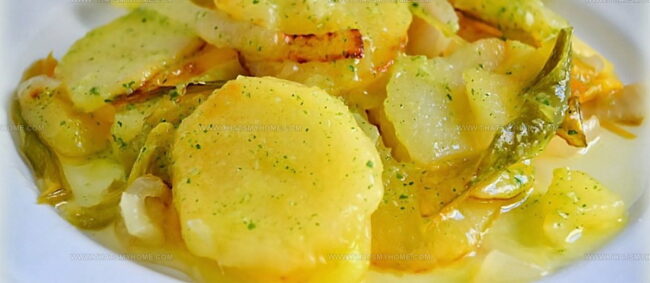
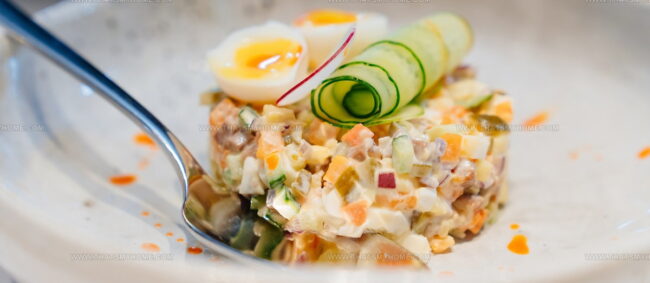
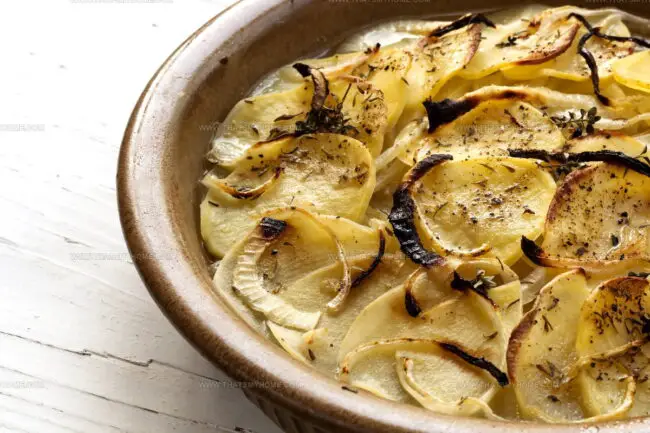
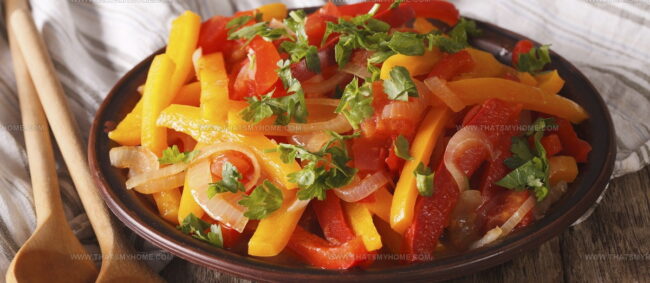
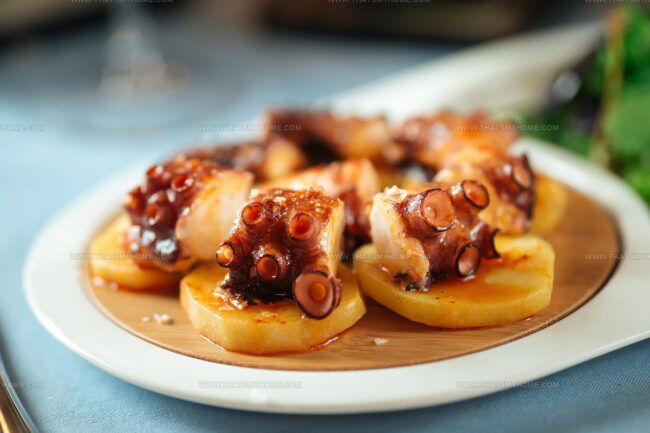
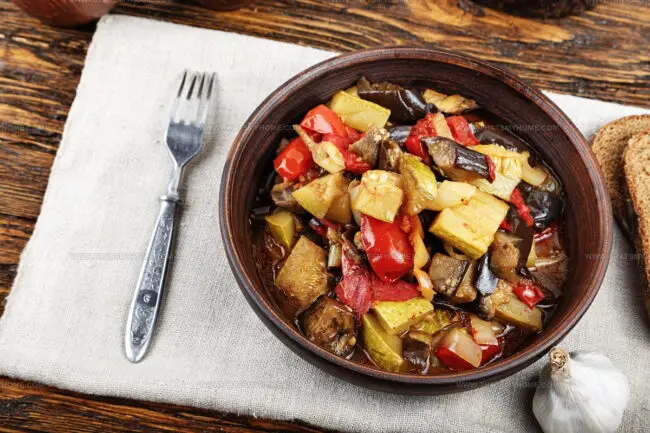
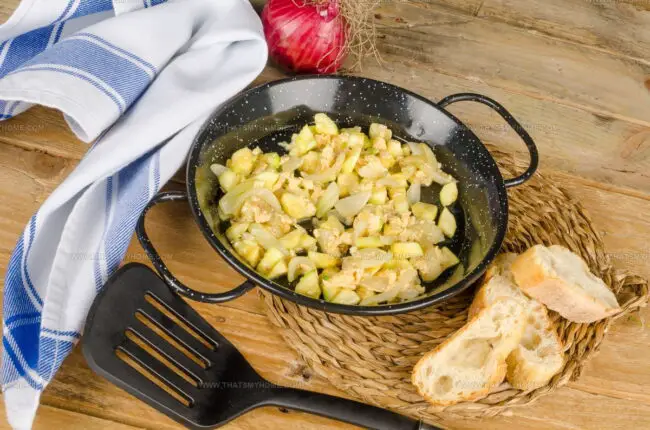
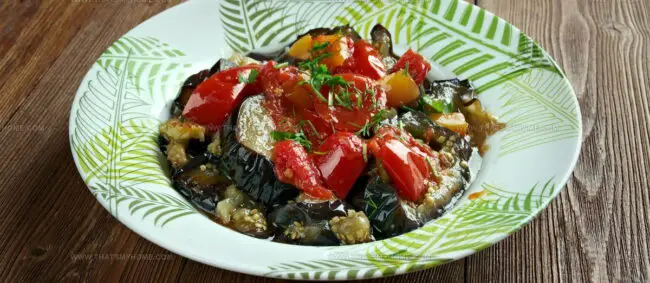
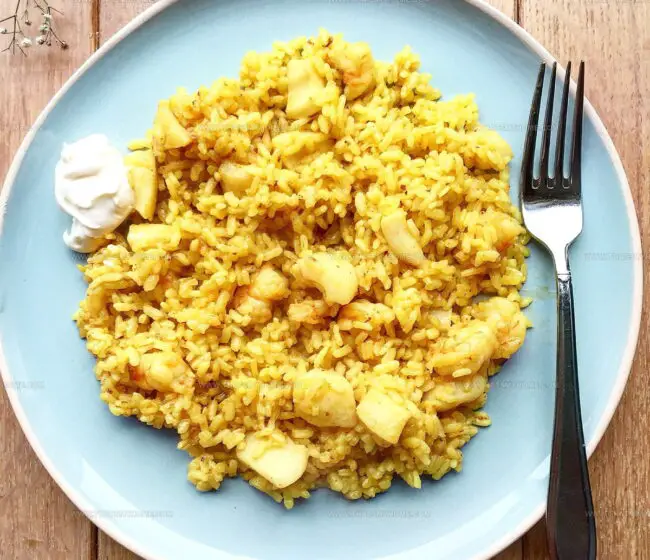
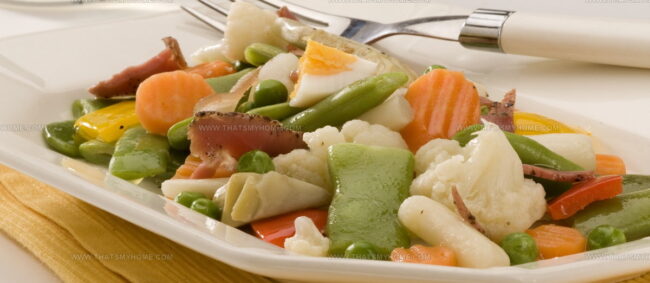
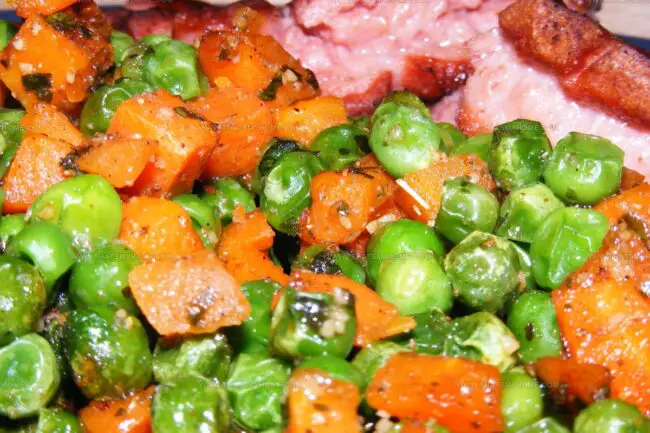
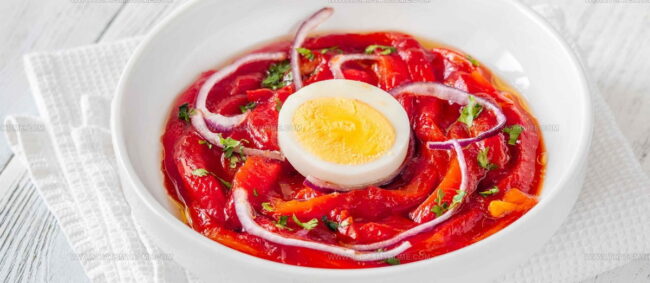
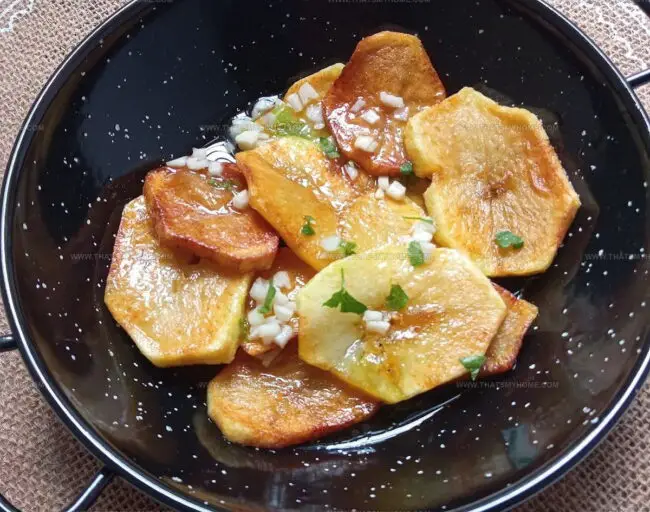
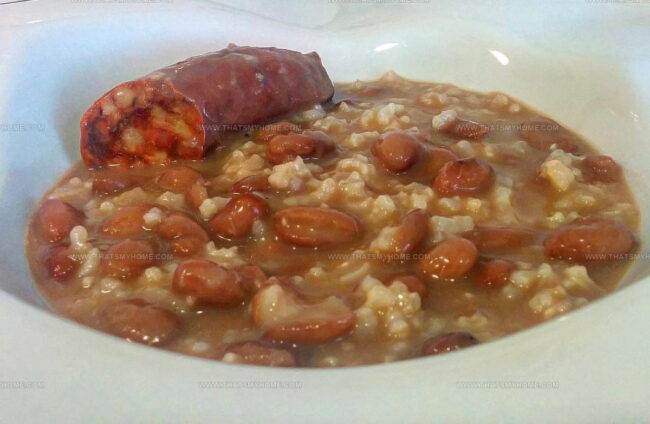
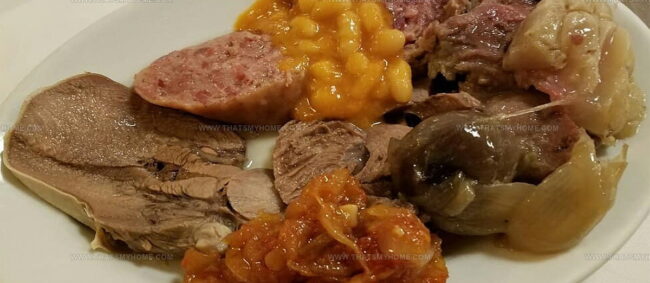
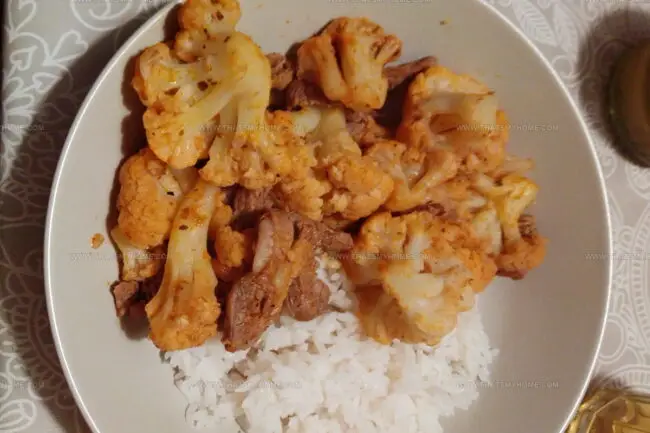
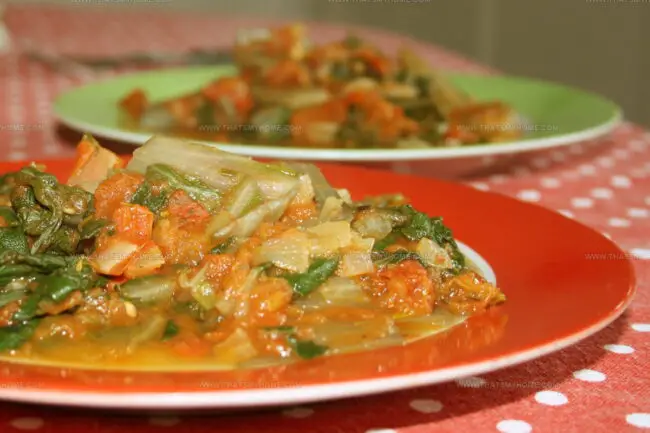
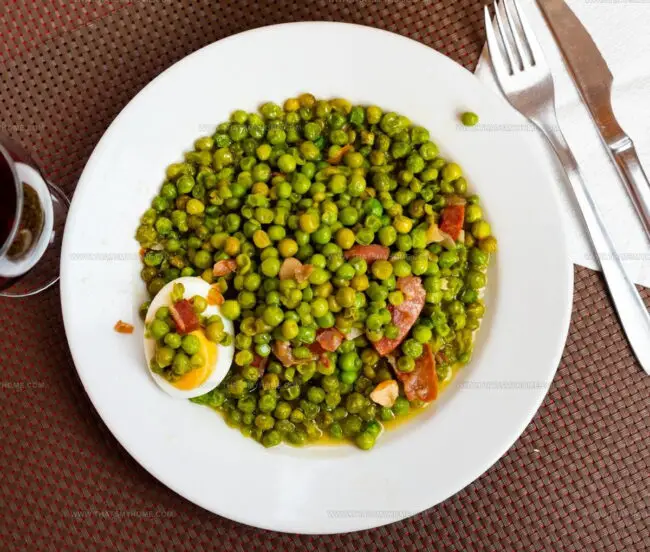
Mary Ellen
Founder, Pastry Chef & Recipe Developer
Expertise
Education
Savannah Technical College
Mary Ellen is the heart and soul of thatsmyhome.com. As the founder, pastry chef, and recipe developer, she refined her skills at Savannah Technical College with an Associate of Applied Science in Culinary Baking & Pastry Arts.
Mary blends classic techniques with modern twists to make artisanal breads, beautifully crafted pastries, and desserts full of unique flavor. Her passion is evident in every recipe, and she enjoys sharing her expertise through hands-on pastry workshops and insightful articles in local culinary magazines.